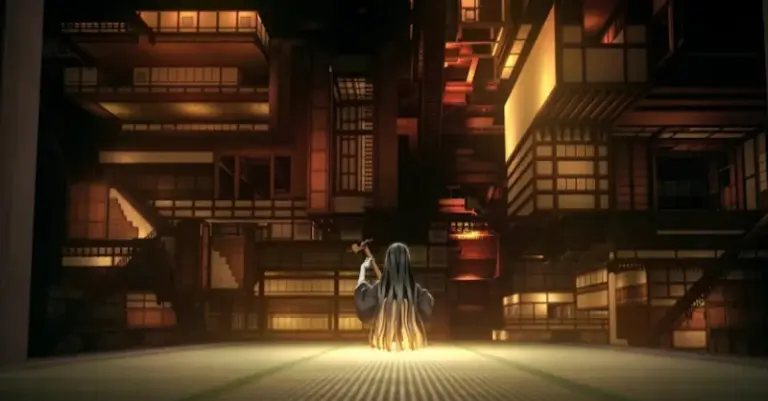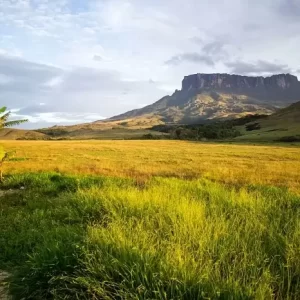Hidden away in the small village of Abhaneri, in the Indian state of Rajasthan, lies one of the world’s most stunning underground wonders—Chand Baori, an ancient stepwell that looks like something straight out of a myth or fantasy tale.
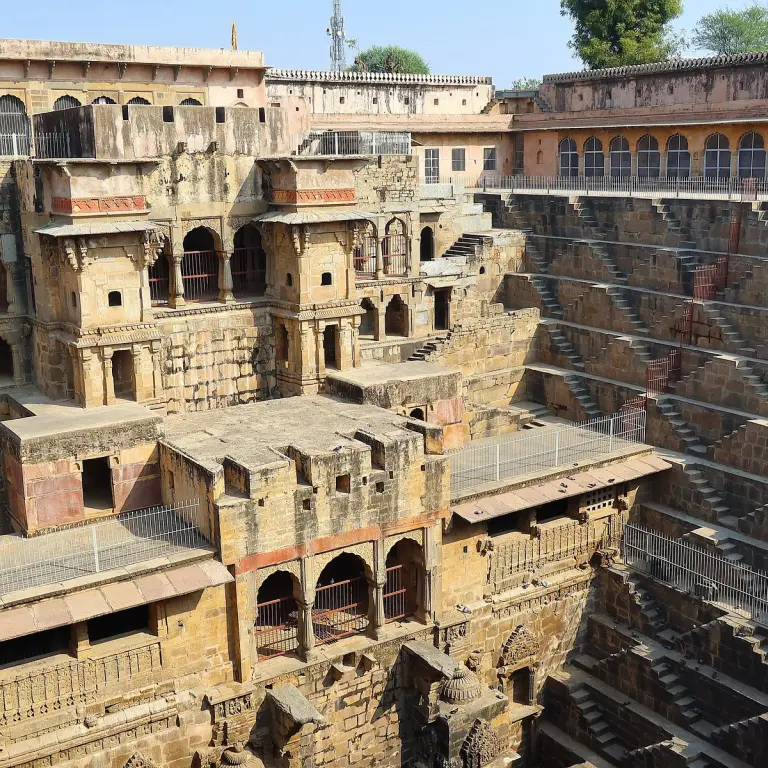
Built between the 8th and 9th centuries under the rule of King Chanda of the Nikumbh dynasty, this architectural marvel is not just a water reservoir but a geometric labyrinth that continues to captivate architects, filmmakers, and curious travelers alike.
>> The mysterious ‘Musical Pillars’ of an ancient Indian temple that play music when struck
A Cinematic Marvel and a Masterpiece of Ancient Engineering
In recent years, Chand Baori has gained worldwide recognition after being featured in Hollywood and Bollywood blockbusters, including The Dark Knight Rises and Bhool Bhulaiyaa. Its symmetrical, awe-inspiring design made it the perfect backdrop for scenes requiring a sense of grandeur, depth, and mystery.
What makes Chand Baori extraordinary is its sheer scale and precision. Plunging 30 meters (100 feet) into the ground, the well consists of 13 levels and around 3,500 perfectly aligned steps descending in a symmetrical, inverted-pyramid shape. As you gaze downward, it’s easy to feel as if you’re staring into a visual illusion or a stone-carved maze.
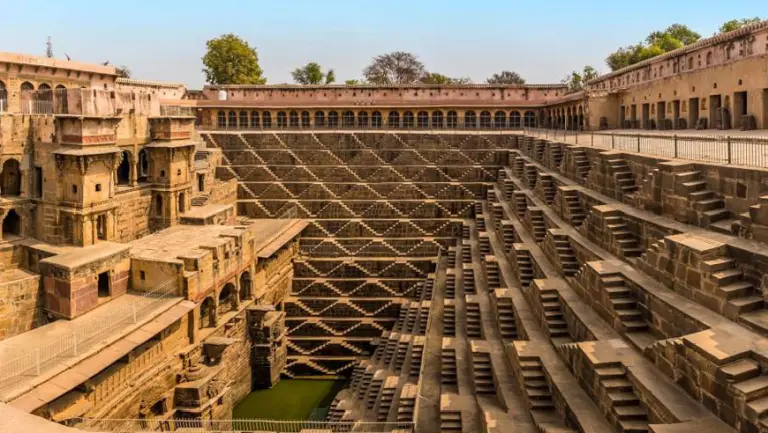
A Cool Oasis of Stillness and Silence
Apart from its hypnotic geometry, Chand Baori is also known for its cool, quiet microclimate. The air at the bottom of the well is 5–6°C cooler than at the surface, offering respite from the desert heat. The echoes of sound reverberating from its depths create an atmosphere that feels almost otherworldly.
At the base lies a pool of emerald-green water, with a beautifully carved temple structure featuring arched corridors and shadowy alcoves that lend an eerie but enchanting vibe. Some believe that the temple’s placement and orientation may hold mathematical or astronomical significance, though experts still debate the exact purpose behind its intricate design.
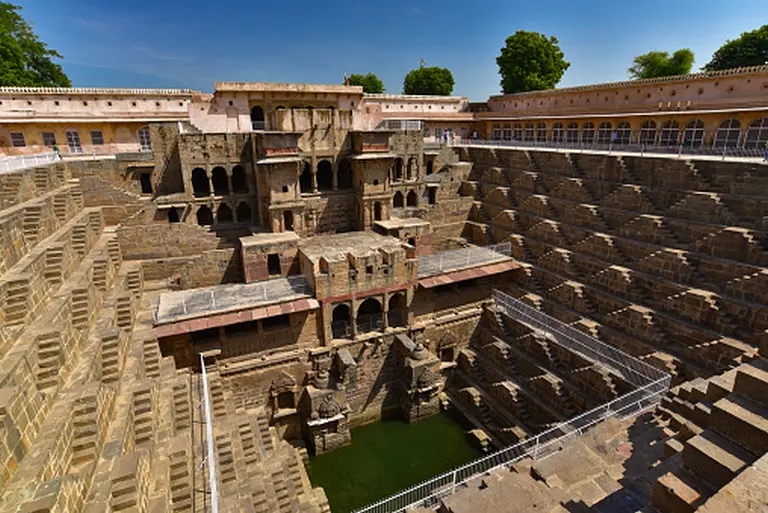
>> Baby-tossing: The breathtaking ritual that turns faith into flight
Purpose Meets Spirituality
Originally constructed to harvest and conserve water year-round, the stepwell was designed in such a way that people could access water from any angle and at any level, even in the driest months. But beyond its practicality, Chand Baori also served a spiritual and communal role, functioning as a gathering place for ceremonies, meditation, and social life.
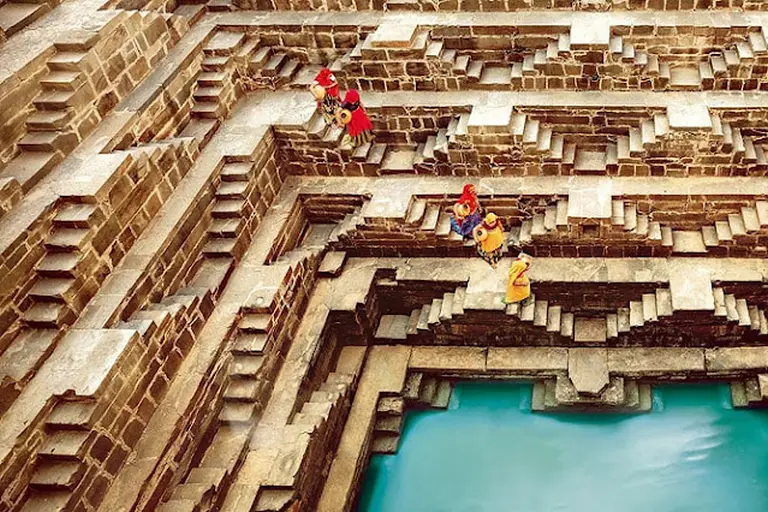
A Hidden Gem Worth the Journey
Today, Chand Baori draws visitors from all over the world, fascinated by its architectural brilliance and cinematic allure. Despite its remote location, this thousand-year-old underground wonder remains one of India’s most visually striking and mysterious landmarks, a true tribute to the ingenuity of ancient Indian engineers.
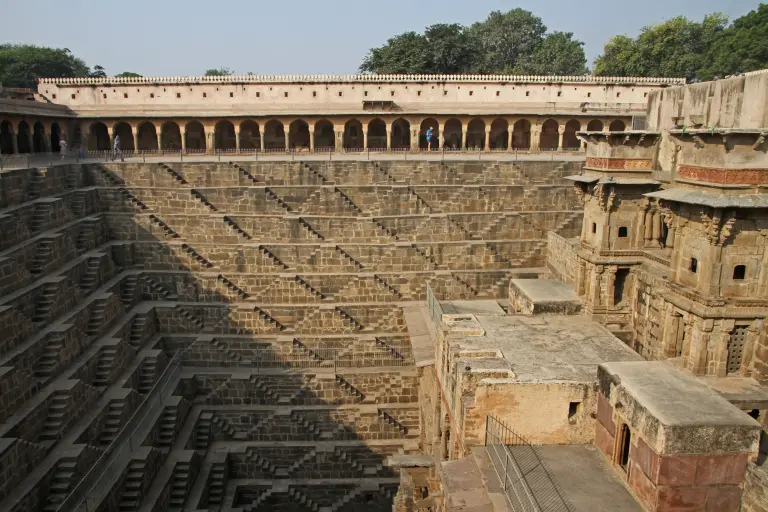
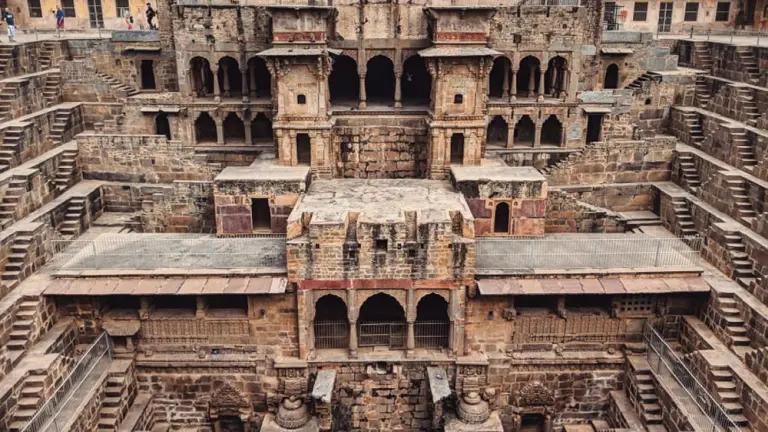
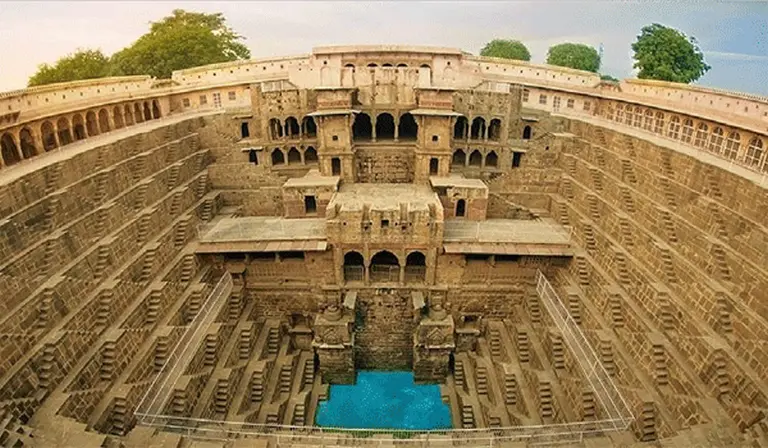
>> Masuleh: A Unique Iranian Village Where Roofs Serve as Pathways
FAQ
What is Chand Baori?
Chand Baori is an ancient stepwell built over a thousand years ago to store water and provide a cool resting place in the arid desert climate of Rajasthan. The stepwell features 3,500 narrow steps arranged in perfect symmetry, descending 13 stories to reach the water table below. Its precise geometry and architectural complexity make it one of the most fascinating stepwells in the world.
Where is it located?
Chand Baori is located in the small village of Abhaneri, around 95 kilometers (59 miles) east of Jaipur, the capital city of Rajasthan, India. It is often visited as a day trip from Jaipur, especially for those interested in lesser-known historic sites.
When was Chand Baori built?
It was constructed in the 9th century during the reign of King Chanda of the Nikumbh dynasty. That makes it over 1,200 years old, and yet its design continues to amaze modern architects and engineers.
Why was it built?
The primary purpose of Chand Baori was to harvest and store water in the extremely dry region of Rajasthan. Beyond functionality, it also served as a gathering place, where locals would seek relief from the intense heat. The well’s depth and stone walls kept the temperature around 5–6°C cooler than the outside environment.
What makes Chand Baori architecturally unique?
Its most striking feature is the precise arrangement of 3,500 steps forming a mesmerizing geometric pattern. These steps descend in a zigzag form on three sides of the well, while the fourth side houses a pavilion with balconies, galleries, and sculptures. The symmetry, balance, and scale of the design are considered a masterpiece of Indian architecture.
Is Chand Baori still in use?
No, the stepwell is no longer used for water storage. It has become a protected historical site and is maintained by the Archaeological Survey of India. However, its legacy as a feat of ancient engineering and cultural heritage remains as strong as ever.
Was Chand Baori ever used in films?
Yes, Chand Baori’s stunning visuals have attracted filmmakers from around the world. It was featured in:
- The Dark Knight Rises (2012) – as part of the prison scenes
- The Fall (2006) – in its dreamlike sequences
- Several Bollywood films and documentaries
Its cinematic appearance has introduced this architectural marvel to a global audience.
What can visitors expect when visiting Chand Baori?
Visitors can explore:
- The grand stairways and symmetrical design
- Intricate carvings and sculptures, including images of gods, dancers, and mythological creatures
- A small temple dedicated to Harshat Mata, the goddess of joy and happiness
- A quiet and mystical ambiance, especially in the early morning or late afternoon light
Is there an entry fee?
Chand Baori is open to the public and generally has no or minimal entry fee. However, it’s best to check in advance or through a local guide or tour operator if traveling from Jaipur.
Is it worth visiting Chand Baori?
Absolutely. While it may not be as famous as India’s major monuments, Chand Baori is a hidden architectural wonder. Its mysterious depth, intricate layout, and serene environment offer a unique cultural experience for history lovers, architecture enthusiasts, photographers, and curious travelers.
Chand Baori is a timeless marvel, quietly tucked away in the Rajasthani countryside. It tells a story of innovation, resilience, and beauty, created not just to store water but to astonish the senses and honor the gods. For those willing to step off the beaten path, this stepwell offers a window into India’s ancient ingenuity and artistry, still intact after more than a millennium.

